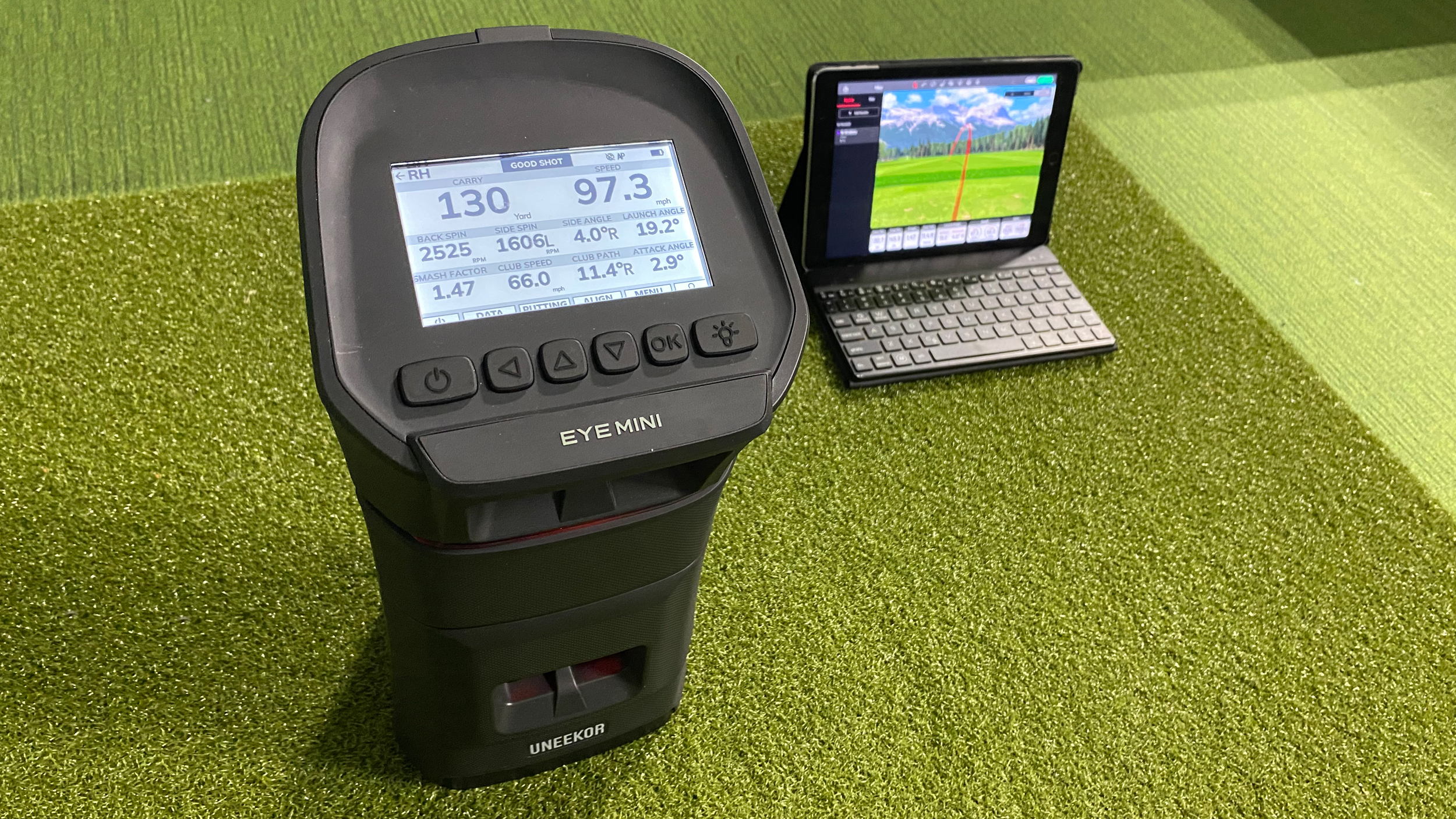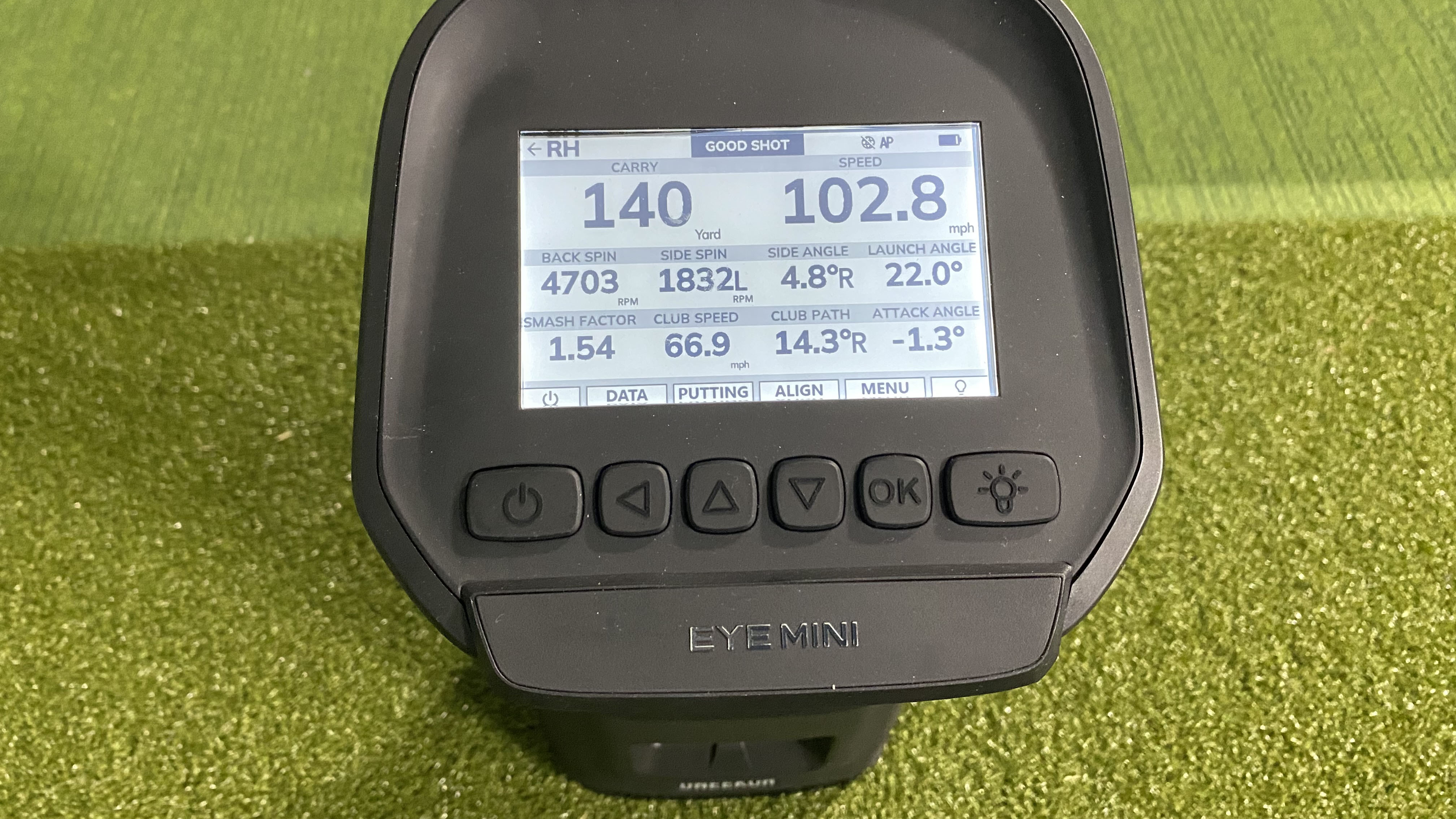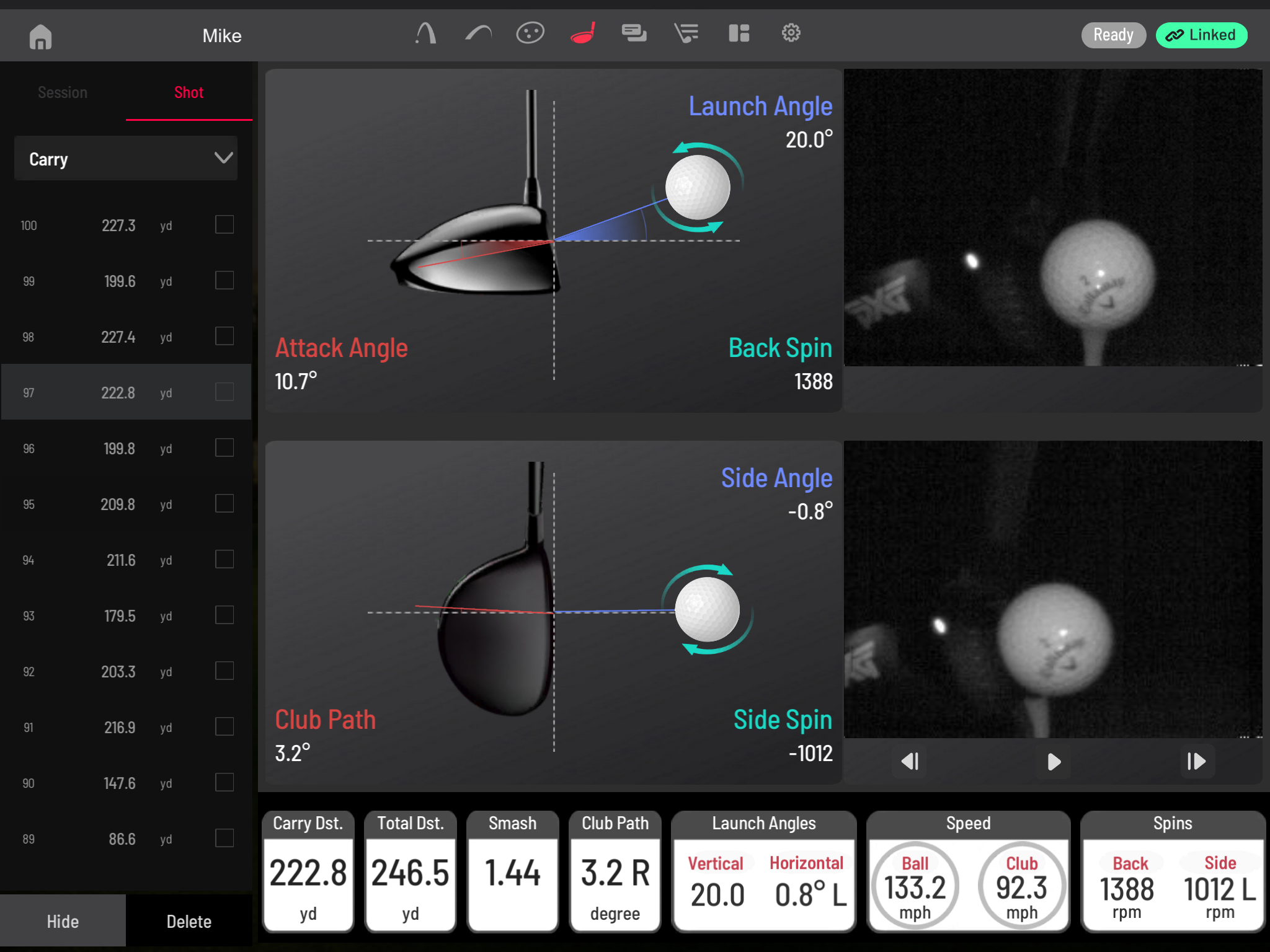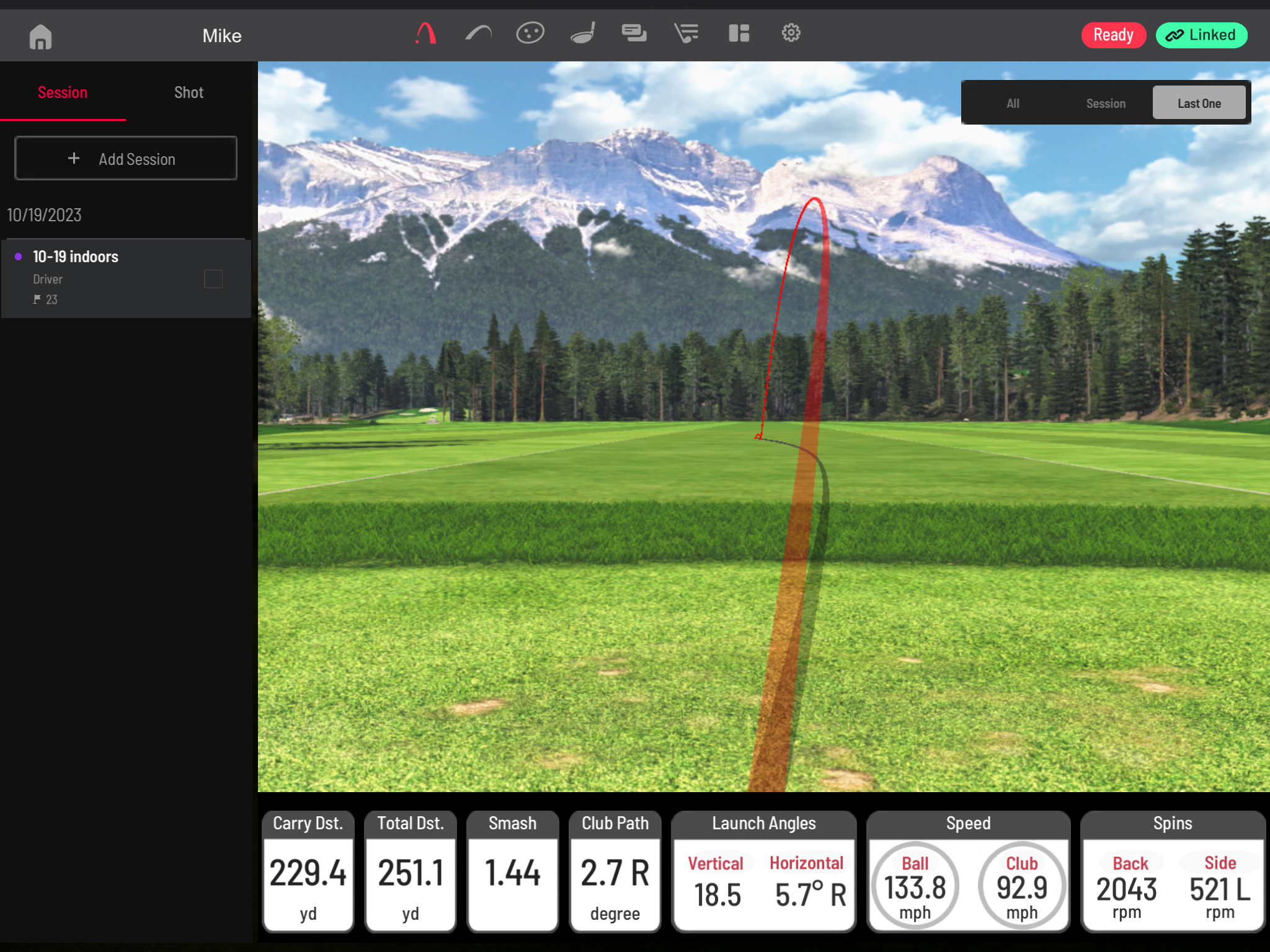Uneekor Eye Mini Launch Monitor Review
Mike Bailey took Uneekor’s portable launch monitor out to the range and indoors to put it through its paces

A very professional portable and accurate launch monitor, the Eye Mini from Uneekor is a great tool for serious players.
-
+
Very accurate, both outdoor and indoors
-
+
Readings nearly instantaneous
-
+
Impact video
-
+
Easy to read display
-
+
Can be used as a simulator
-
-
Not as compact as many launch monitors on the market
-
-
Not compatible with Apple computer
Why you can trust Golf Monthly

Go down any range at a high level professional tour event, and watch the players. None of them are alone. Besides their coaches and caddies, right behind them or across from them is a launch monitor, most likely an orange Trackman (behind) or one that works face-on like the GCQuad by Foresight Sports.
For most regular golfers, those are just too darn expensive. An indoor/outdoor Trackman 4 runs about $25,000; The GCQuad is around $15,000. Fortunately, there’s a pretty good selection of affordable launch monitors, many of them under $1,000, which will do the trick for everyday players. But while most of these are pretty darn good, they still don’t really compare to the quality and precision of the best launch monitors that run at $15,000 or higher.

This is where the Eye Mini, the first portable launch monitor from Uneeker, comes in. It’s designed to not only compete with the ones used on tour, but attract serious amateurs and perhaps more modest pros who have to shell out their own money for a launch monitor. At $4,500, Uneekor, a Korean company (known for its overhead indoor units) with U.S. headquarters in Irvine, Calif., will tell you that the Eye Mini has the same technology as the GCQuad. Uneekor is also trying to build a tour presence with the Eye Mini. Cameron Champ uses one, and Muni “Lily” He and Hyo Joo Kim of LPGA Tour are also Eye Mini owners.
The Eye Mini, in fact, looks much like the GCQuad and uses similar technology. While many of them, including Trackman, employ radar to track balls, the Eye Mini, like the GCQuad, has two high-speed cameras that simply track the ball and club within a few feet.

The advantage is that it can instantaneously record data without waiting for the ball to land or even reach its apex. For example, when I tested the Eye Mini indoors against the Foresight Sports GCHawk, I would look to the Eye Mini first for my numbers, which were displayed pretty much immediately after impact. That’s a nice trait, whether you are indoors or outdoors. I also found the data to be very close to the GCHawk. The variances were very small, which hasn't always been the case with the under $1,000 units I’ve tested.
The Eye Mini can be used by itself or with a Personal Computer or iPad. Oddly enough, it is not compatible with an Apple Computer or an iPhone yet, but that might be coming soon. To use it as a simulator, it has to be paired with a PC and a third-party application.
Setting up the Eye Mini is pretty simple. You can connect using an ethernet cord with either a PC or the router of your Internet network. From there, you just follow prompts to get it registered and updated.
Subscribe to the Golf Monthly newsletter to stay up to date with all the latest tour news, equipment news, reviews, head-to-heads and buyer’s guides from our team of experienced experts.
If you just want to use it by itself, there’s not much else you have to do. With a nice large E-Ink Backlit Screen on top, you can simply take it to the range, go through the prompts on the rubber buttons and start swinging. You will need to align the Eye Mini with your targets, and you can do that either manually or automatically by placing two balls down the target line near the launch monitor to calibrate it.

For the most accurate readings, the unit also comes with small dot stickers to be placed near the toe of your clubs. This enables accurate readings of path, clubhead speed, and attack angle of the club. Overall, the Eye Mini can also provide smash factor, flight time, apex, distance to apex, and ball data that includes carry, ball speed, launch angle, launch direction, back spin, and side spin.
The ball data is also raw. There are no settings in which the Eye Mini will adjust the numbers from range balls to performance balls. So if you’re hitting on a range with cheap range balls, carry and spin will reflect that. For example, when I measured a sand wedge indoors with a Callaway Chrome Soft, my spin numbers were twice as high (around 9,000 rpm) than when I hit a sand wedge on an outdoor range with worn-out range balls. My driver carry distance was also slightly higher indoors with a performance ball than it was with range balls. But as you get into the longer clubs, the variance in spin between the range balls and performance balls is much less because of the higher smash factors.



To get everything out of the Eye Mini, though, you’re going to want to pair it with a PC or an iPad. I don’t own a PC, so I paired it with my iPad using the VIEW Air app from Uneekor (again, the VIEW Air app isn’t available for iPhone or Android phones). This opens up a whole other world of graphical information like your session history, shot dispersion, shot shapes with overhead and horizontal views.
But one of the best aspects of using the View Air App is that you get pictures and video of the club coming into and making impact with the ball. You can actually see where the club is coming from, where it exits, and most importantly, impact, which will explain why your smash factor was only 1.29 with a driver.

Mike has worked in the golf industry for nearly 30 years with full-time staff positions at publications and websites that include PGA Magazine, the Golfweek Group, and GolfChannel.com. He is currently writing for several different sites and magazines and serves as a contributing equipment writer for Golf Monthly, focusing on irons, shoes and the occasional training aid or piece of technical equipment.
Mike has experienced a number of highlights in his career, including covering several Ryder Cups, PGA Championships and the Masters, writing instruction pieces and documenting the best places for golf travel for more than a decade.
Mike carries a 7.6 handicap index and has two hole-in-ones, the most recent coming in February 2022. A resident of Texas for more than 40 years, Mike plays out of Memorial Park Golf Course (home of the Houston Open on the PGA Tour).